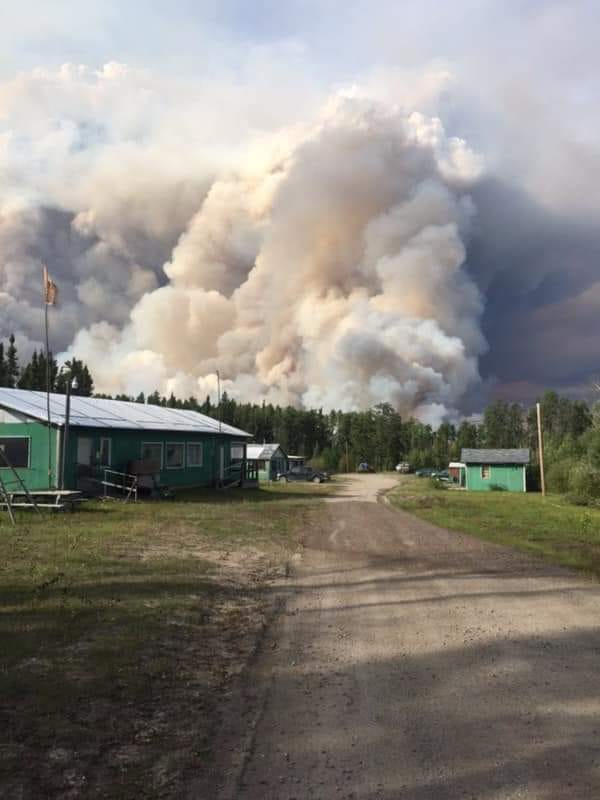
Valerie G. Barnes Connell Jordan
Wildfires have burned across northern Saskatchewan throughout the summer months, in some cases causing evacuations. Turnor Lake and Birch Narrows Dene Nation were evacuated earlier in the summer and have return.
For Sandy Bay and Southend the story is different. Sandy Bay was evacuated Aug. 13 and have been out of their community since and are still as the Northern Advocate goes to press.
The Flanagan fire has grown to more than 44,000 hectares and as of Sept. 4, was with two kms of the community and 2 kms of the only road access into the community of Sandy Bay.
The community of Southend was evacuated the last week of August, when the Merkley fire caused the community’s only access to be closed. It has since moved closer to the community as well, but the reason for the evacuation remains the proximity of the fire to the road. The fire has crossed the road.
A third fire remains out of control, the Arm fire, and that was the cause of some evacuations for health concerns some people from Deschambault Lake and a few from Pelican Narrows.
Earlier still in the summer a fire came close to causing an evacuation in Creighton, that that situation changed when the fire was brought under control.
As the Northern Advocate goes to press, schools are entering their second week of classes and Sandy Bay students are split within several communities, with evacuees in seven hotels in Prince Albert alone, Jason Young, Director of Education for Northern Lights School Division (NLSD), said in an interview with the Northern Advocate.
“It’s a logistics issue. How do you bring everyone together and organize folks to be able to provide an education,” he said.
In preparing for the return of students, NLSD has begun working out a strategy to deal with the anxiety and stress of being evacuated and not knowing when they will be home, what that will look like when it happens.
“So it’s tough times and I don’t know that kids, or even staff, are prepared to do that well given that in the back of their minds is the freight about the state of their home community and what things will look like when they go back So anxiety and stress is high amongst everyone,” he said.
In planning NSLD has been looking at such things as giving some time for students to adjust be being home, time for staff to prepare, time to register the students, another time for staff preparation in terms of student schedules and bringing the students back to the classroom.
“We’ve kind of put together a logistical school plan that’s tentative. If we have to move things, I guess we will,” Young said.
On the fire front, Trying to get areas of the Flanagan fire stabalized is a priority so evacuees can return home as they have been away from home close to four weeks, and are getting restless.
They want to go home.
Although days are staying hot, the nights are cooling and that makes a difference in the fire patterns. It could lessen the intensity of the fire and allow more ground crews to action the fire, Duane Hiebert, Peter Ballantyne Cree Nation (PBCN) Emergency Management director, said, in an interview with the Northern Advocate.
There are still many variables in the Flanagan, that threatens Sandy Bay and the Merkley fire that is affecting the evacuation of Southend.
The Flanagan fire will be assessed in a few days to see what the possibilities are for making a recommendation of repatriation for those evacuated from Sandy Bay and Southend.
In two media zoom calls in August, Grand Chief Brian Hardlotte, of the Prince Albert Grand Council (PAGC), and Chief Peter A Beatty, Peter Ballantyne Cree Nation (PBCN) called on the provincial government to change the way they fight wildfire. Primarily it was to “get the boots on the ground” and put resources to wildfires, when they start, particularly if they have potential to impact a community.
And, to use the many Indigenous firefighters in the communities across Canada, that are trained and available, rather than bringing firefighters from other parts of the world.

